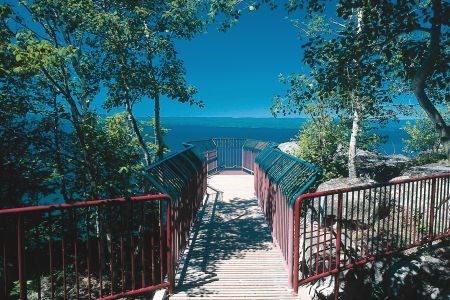THUNDER BAY — In what's seen as a significant sign of the tourism sector's ongoing recovery from the COVID-19 pandemic, stakeholders from across Northern Ontario have gathered in Thunder Bay for a tourism summit.
For two years, various segments of the industry suffered badly from COVID-19 travel restrictions, but the relaxation of the rules earlier this year kickstarted a gradual resurgence.
The Northern Ontario Tourism Summit has brought over 200 industry and government professionals to Thunder Bay, with others across the region participating online.
Paul Pepe, manager of tourism for the City of Thunder Bay, said it's the first such in-person gathering since 2017.
The three-day summit at a Thunder Bay hotel was developed as a partnership event between Destination Northern Ontario and Nature and Outdoor Tourism Ontario.
David MacLachlan, executive director of Destination Northern Ontario, described it as an opportunity to set the stage for future growth.
"Because of the distances in the North, it's just great to get everybody together and to talk about what's new, what's coming down the pipe, what trends are out there, and where the sector is going," he said in an interview Tuesday.
Reflecting on the impact of COVID, MacLachlan said the North actually fared better in some respects than most of the country in terms of occupancy.
"The sectors that benefited were the hotels and motels for the most part, but really, cottage rentals — anybody that had a cottage by a lake, especially drive-in — those operators did really well."
Conversely, hotels suffered from a lack of group meetings, conferences and social bookings.
But MacLachlan said fly-in resorts and lodges that depend heavily on customers from the U.S. experienced a severe downturn in business.
He predicted that 2023 will be "a year of rebound" and making up for lost ground for those operators.
The Thunder Bay conference includes training workshops, information sessions, a range of speakers, networking opportunities, a tradeshow, and innovative problem-solving workshops.
It's a good opportunity, organizers say, for tourism-focused businesses to make the most of the post-pandemic recovery.
According to Pepe, Northern Ontario is well-positioned to be at the forefront of that upward trajectory.
"What we saw during the pandemic, and it's a trend we are expecting to continue, is that people are looking for clean water, clean air, open spaces, and Northern Ontario has a lot of that .... Coming out of COVID, now is the time for industry to take those lessons from the last two years and take them to the next level, to integrate them with their business planning," he said.
Pepe added that the North is showing up more and more on the "national and international radar screens" of travellers looking for outdoor experiences that are exactly what the region offers.
In Thunder Bay, one of the top tourist destinations is Fort William Historical Park, where visitor traffic this year left officials feeling optimistic about the future.
General manager Patrick Morash, who's participating in the conference, said the park experienced a strong rebound this year.
"We've seen a significant return of visitors, as have many of the other operators attending the summit this week. It's been a great rebuilding year for getting people back engaged in tourism and visitor activities."
In a report published Tuesday, Destination Canada said that despite some ongoing challenges, the tourism sector's recovery is gaining momentum at a faster pace than previously expected.
It will be 2024 before leisure travel will recover to pre-pandemic levels, it said, but it described this as "a remarkable feat" considering that this is one year earlier than it predicted last spring.
Domestic tourism will lead the recovery, reaching 92 per cent of pre-pandemic levels by the end of this year, and 100 per cent next year.
The recovery of the U.S. market is forecast to reach 91 per cent of pre-pandemic levels next year, before accelerating even more and reaching 112 per cent of pre-pandemic levels in 2024.
— TBNewswatch




